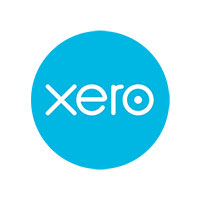
The surprise announcement in the summer budget last month was the introduction of a new tax regime for dividend income from April 2016. At the time the details were sketchy. We were told that the current 10% notional tax credit was to be abolished, that there would be a £5,000 dividend allowance and that the rates of tax on dividend income in excess of £5,000, would be 7.5% for a basic rate taxpayer, 32.5% for a higher (40%) taxpayer and 38.1% for an additional (45%) taxpayer.
HM Revenue & Customs have now issued some further details as to how the new regime will operate. There are still many unanswered questions, but at least now we have a better understanding of the proposed framework.
As currently, dividend income will still be the top slice your taxable income. The £5,000 dividend ‘exemption’ is actually a nil rate band, not an exemption. It applies whatever is your marginal rate of tax. So if you are a basic rate taxpayer, it takes up to £5,000 of the basic rate band, if a higher rate taxpayer, £5,000 of the higher rate band.
For example, if you have employment income of £25,000, then your tax, at the proposed 2016/17 rates, is £2,800. In addition you can have up to £5,000 of dividend income, and pay no further tax. The same is the case if your employment income is £75,000, your tax is £19,200 and any dividend income up to £5,000 does not increase your tax bill.
Most taxpayers with £5,000 or less of dividend income will see either no change in their tax position or a small reduction. Dividend income in an ISA is unaffected and remains exempt from tax.
In a few cases, the change may result in a small increase. For example, if your income is £100,000, then your tax would be £29,200. However, if you now received a dividend of £5,000, your tax bill would increase by £1,000, as although the dividend is taxed at 0%, it pushes your income over the £100,000 threshold at which level the personal allowance starts to be withdrawn.
The position though for business owners operating through a company is different and it is such individuals who are the real target of this change.
The typical remuneration strategy for many small incorporated business owners is to take a small salary and top up income with a dividend. Up to the higher rate threshold this is a very effective strategy as it could mean that the individual owner paid no income tax personally and the company just paid 20% tax on its profits after deducting the small salary.
In virtually all cases now the new dividend regime will result in a higher tax bill.
For example, assume a small business owner takes a salary of £8,000 and tops up with a dividend of £31,000. Under the current regime, using 2016/17 rates, no additional tax would be paid by the individual business owner. Under the proposed regime, that owner would now face a tax bill of £1,725. The company’s tax position is unaltered. Overall, between the individual and the company there has been an additional tax levied of 3.7% on the company’s profits used to pay that salary and fund the dividend.
What all this means is that the level of income at which it becomes tax efficient to incorporate has been raised and many companies with smaller profits may now start to think about disincorporation.




